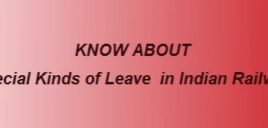How is failure of signals guarded against?
June 21, 2019
Signal installations are designed as far as possible for fail-safe operation, which means that any failure should leave the system in a state where dangerous train movements are not allowed. For instance, in case of a failure detected at a panel interlocking installation, all signals controlled by it are designed to revert to On. Similarly, a
Read More
What is a ‘fixed signal’?
June 21, 2019
A fixed signal is any signal that is permanently erected at a location. The term is used to distinguish normal signals and indicators from hand or lamp and flag signals, detonators, flares, bells, and other special-purpose methods of signalling. ये भी पढ़े - योगासन का इतिहास तथा योग से
Read More
What does ‘ahead’ or ‘behind’, ‘advanced’ or ‘retarded’, or ‘front’ or ‘rear’ mean when referring to a track or signals?
June 21, 2019
All orientation terms used when talking about track, points, signals, stations, etc. are given from the point of view of the driver of a train looking in the direction that the train is moving. Thus, a signal may be ahead of him or behind him. A signal or station that he is approaching is referred to as being in front, and one that he has passed
Read More











